The Rediscovered Soul of a Masterpiece
Bridging the past and present through immersive suggestions, Robert Wilson’s “MOTHER” breathes new light and life into Michelangelo’s Pietà Rondanini’s timeless masterpiece, offering a bold and touching reinterpretation of one of Milan’s eternal symbols.
Article by Alessia Baranzini
Clicca qui per leggere questo articolo in italiano
From the womb of the Apuan Alps, between candor and impurity, between light and darkness, the white marble of Carrara is born: a living material that holds within itself the very essence of human nature. In the womb, between silence and darkness, the life of man is born, and among these, it will find its end.
In the darkness, humanity begins and ends, and, in the darkness, “MOTHER” begins and ends, the work with which Robert Wilson offers a new, disruptive vision of one of the masterpieces and timeless symbols of the city of Milan: the Pietà Rondanini.
Crossing Porta di S. Spirito (Holy Spirit Gate) and entering the Cortile delle Armi (Courtyard of Arms) of the Sforza Castle, you find yourself at the entrance to the Antico Ospedale Spagnolo (Old Spanish Hospital), a place marked by centuries of pain and prayer. Here, since 2015, the Museum has dedicated a room to Michelangelo Buonarroti’s last masterpiece. Until May 18, the dialogue between the great American director and the sculptor who, more than any other, has given shape to the imagery of perfection in the Western world comes to life.
It is an encounter between past and present capable of generating interpretations of universal value. Through a skillful use of light and a refined visual dramaturgy, Wilson extracts the Pietà from the darkness. He dresses it in a new, weightless, emotional, and contemporary body, almost as if to complete what the Renaissance master sadly left unfinished at his death in 1564.
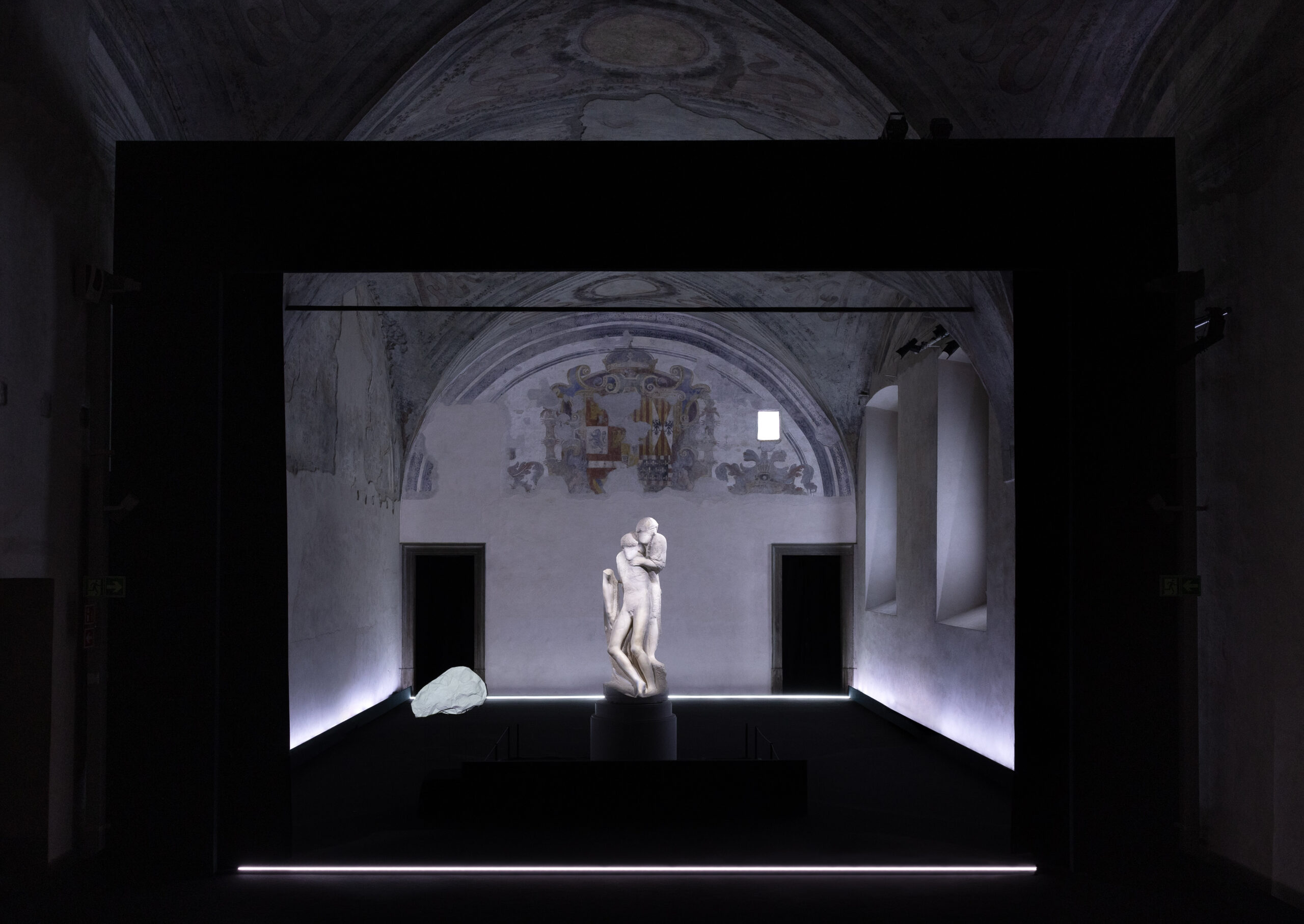
For Wilson, light is not the decoration of what we look at but is the key that allows us to see. Just as it guides our gaze in everyday life, so the director makes it a tool to accompany spectators: through light, he creates space and subtracts it, not only animating the physical dimension of the work and the Museum but also opening up an emotional environment in which those present can freely live their spirituality. It is in their gaze that work happens and lives.
“When I first saw Michelangelo’s unfinished Pietà – Wilson said – I sat looking at it for over an hour. […] It was like looking through an open door, a space that gives time to think and time to dream. The idea of staging it tempted me, but a masterpiece really doesn’t need staging.”
Upon entering, visitors are greeted by dim light. The only illuminated element is a boulder placed on the ground in front of the curtain: a successful and functional device to break the sensation of the fourth wall. You are not in a fictional environment but in a space of truth and presence.
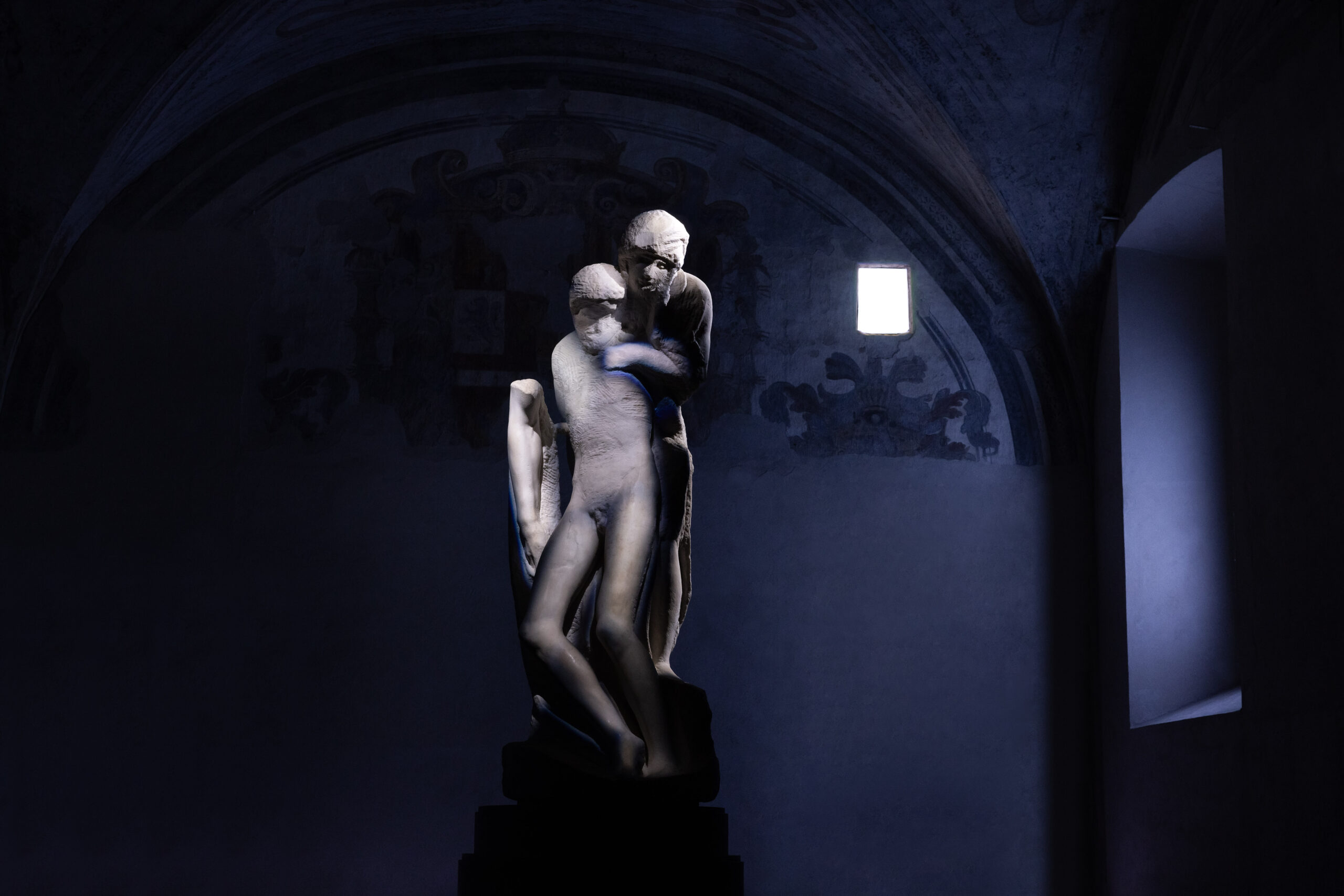
“It’s really dark!” someone whispers. “MOTHER” begins, and even that single stone is swallowed up in darkness, a darkness so deep that you can’t see your own hands, let alone the shoulder of the person sitting next to you. You can’t perceive your own contours; you can’t perceive the presence of others. You return to being alone and, simultaneously, become one with the physical and spiritual body of the work, as well as with the artistic experience itself.
While Wilson opens a luminous window into the observer’s thoughts and emotions, the powerful music of Arvo Pärt’s “Stabat Mater” presses the gaze beyond the matter.
The light traces the two figures, so thin and distant from the muscular and slender subjects to which Buonarroti had dedicated his entire life.
Pärt traces the pain of the human story and, like the author, seems intent on extracting it from the marble.
Dull noises, vibrations, changes in the atmosphere: the experience of “MOTHER” is full of accents that restore all the strength of an immutable and eternal scene.
Suddenly, the face and figure of the Madonna, illuminated by a blue, ethereal, and immaculate light, appear to be transfigured and transcended. Even the lifeless figure of Christ comes to life and breathes for one last moment.
With a crescendo of strings comes death: a rock turns red, we return to darkness.
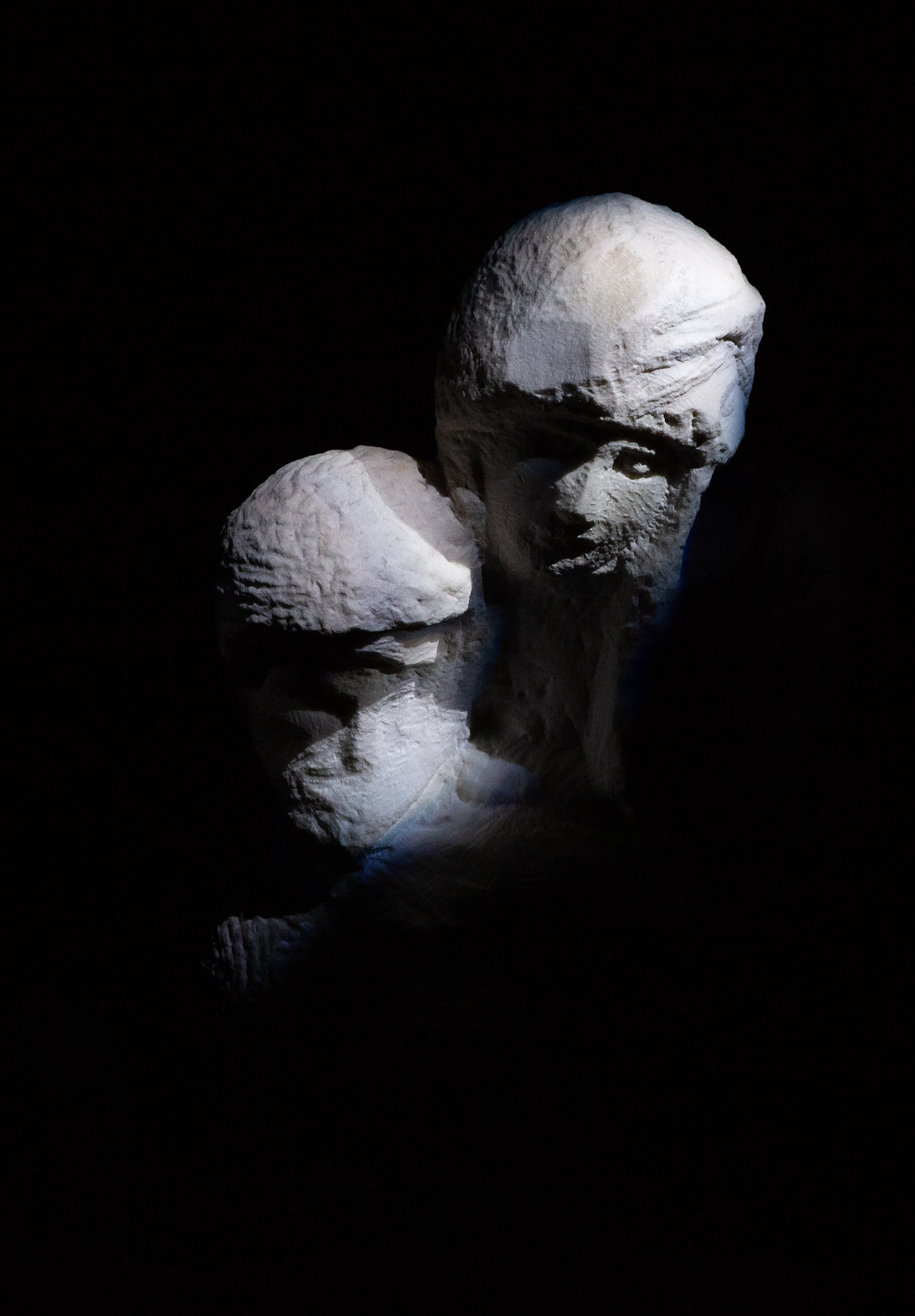
“MOTHER” is undoubtedly a powerful multisensory experience. Fortunately, electronic devices are prohibited. The darkness can completely envelop visitors, canceling their senses for a moment before total immersion. Getting used to the darkness and silence is one of the most challenging parts: these are increasingly rare due to the many screens we use daily.
Wilson’s installation helps us regain a relationship with the light and with that darkness of which we have lost track. It gives both a new meaning, of fullness rather than subtraction.
You leave the Museum with a rediscovered and personal sense of the sacred, be it a human or divine sacred. For a few moments, the emotion and shivers continue. The sunlight seems like a confirmation of salvation and resurrection. You have just returned to life after having experienced immeasurable pain and after having felt, together with it, the hope of consolation.
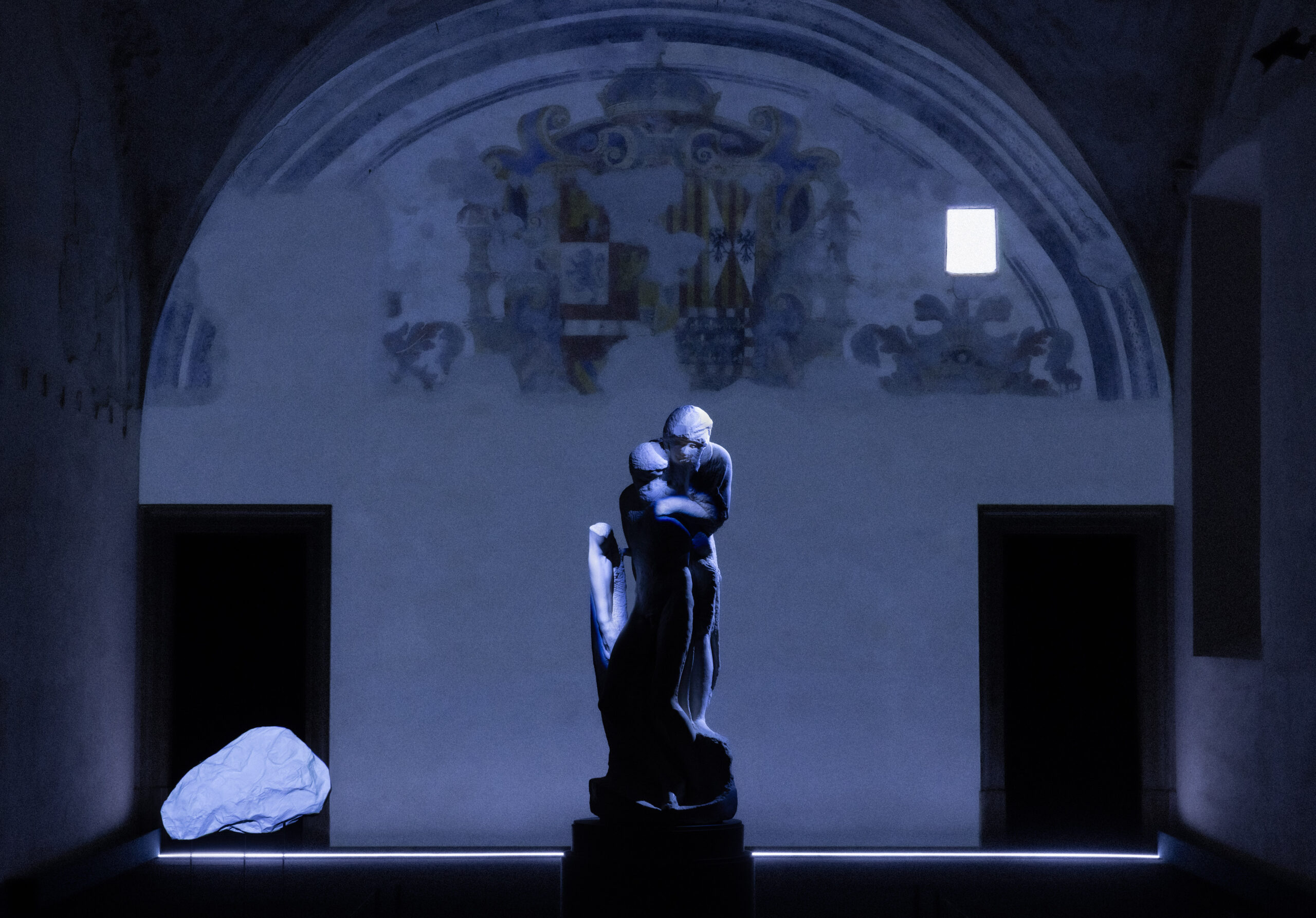
“MOTHER” is an appointment with the Pietà Rondanini to repeat several times, if you have the opportunity. One piece of advice is not to sit in the first available rows, at least the first time, and to stay one step back. Keeping your distance, physically and psychologically, will allow you to be present without sinking too much into the emotion, observing your perceptions from the outside. It will also be useful to avoid being too distracted by technical devices, such as cables and spotlights, which are revealed when approaching the sculpture.
Wilson’s intervention must also be recognized for the merit of not only drawing the public’s attention to a masterpiece of the past but also of proposing a new way to come into contact with a piece of the History of Art through an innovative, contemporary, deeply intimate, and personal approach. Music and lighting are not simple accessories; they can instill creative energy in works and artists who, with the passing of time and generations, are too often thought to have nothing more to tell us. But the light always finds its way. “The light shines in the darkness, but the darkness has not overcome it.” – (John 1:5)
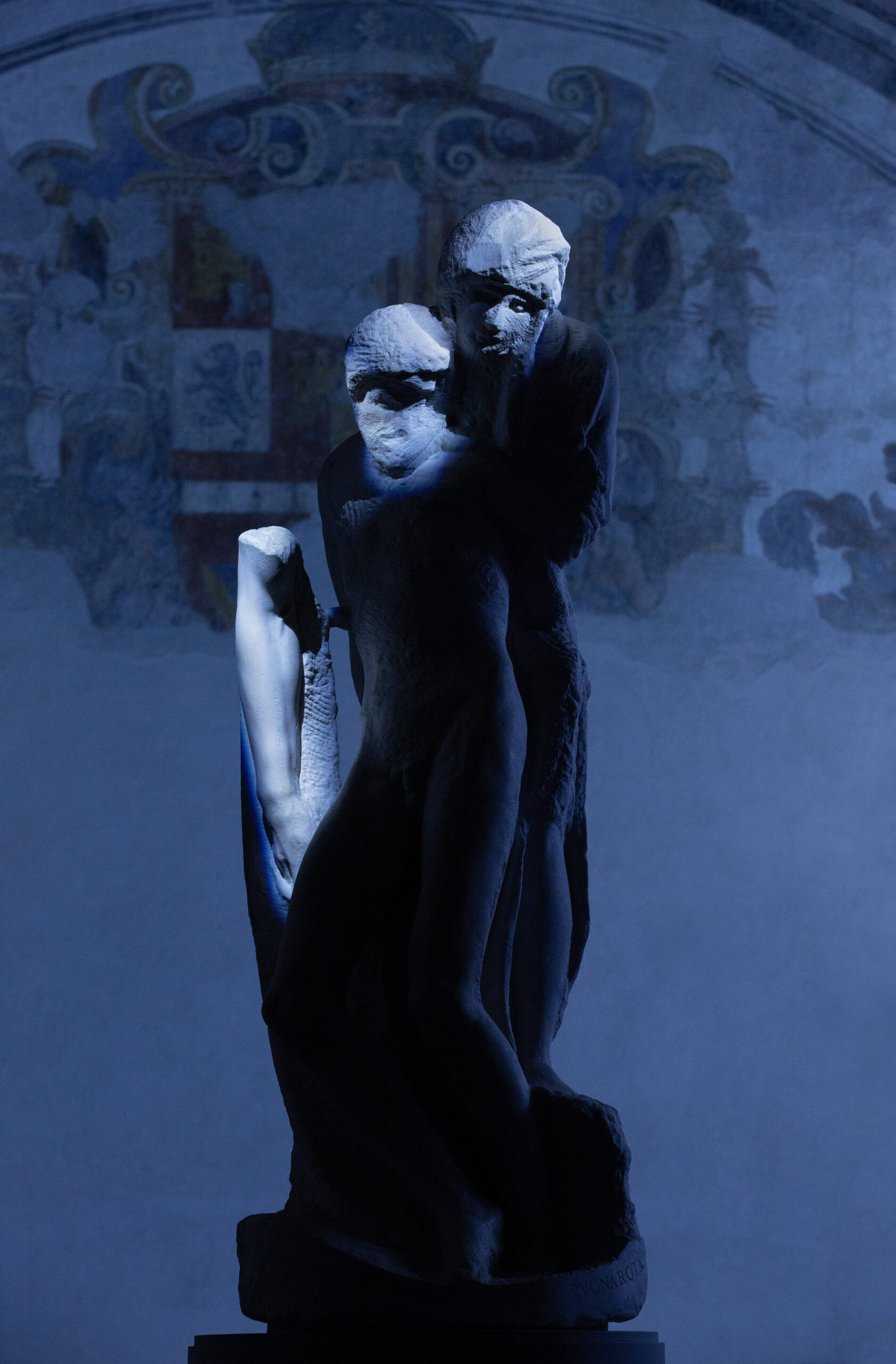
Translation to English: Dobroslawa Nowak
Robert Wilson, “MOTHER”
Curated by Franco Laera
In collaboration with Comune di Milano Cultura
Produced by Change Performing Arts and Salone del Mobile Milano
Museo della Pietà Rondanini, Castello Sforzesco, Milan
08.04-18.05.2025




